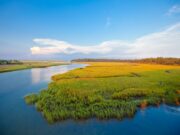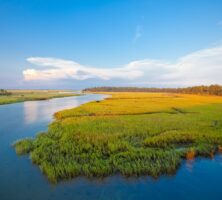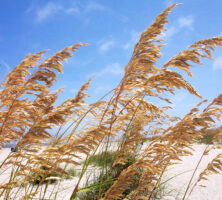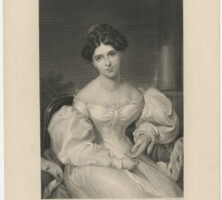Little St. Simons Island lies in Glynn County across the north end of great St. Simons Island, separated from it by the Hampton River.
The north side of Little St. Simons fronts on the mouth of the Altamaha River and the Atlantic Ocean. The 8,840-acre island, consisting mostly of low tidal salt marsh with forested upland tracts on its eastern (ocean) side, is privately owned and is accessible only by water.
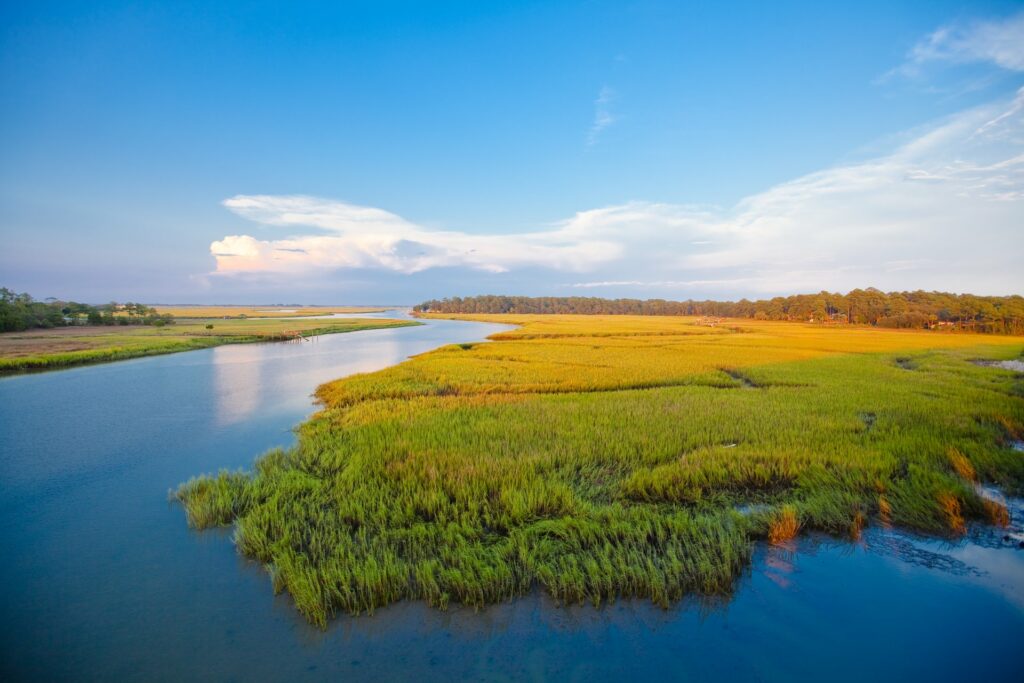
Little St. Simons was awarded as a crown grant in 1760 to Samuel Ougspourger, a Swiss colonist who had migrated to Savannah. That same year the island was surveyed by William G. DeBrahm. Several years later Little St. Simons was purchased by two brothers, John and James Graham, who had plans to develop small-scale agriculture on the tract. The Grahams, who were British Loyalists, departed the colony for England during the American Revolution (1775-83).
Little St. Simons was acquired in 1774 by Major Pierce Butler of Charleston, South Carolina, and Philadelphia, Pennsylvania. Butler also purchased Hampton Point, across the Hampton River on the north end of great St. Simons, and Butler’s Island, a nearby rice tract in the Altamaha delta. Butler, one of the largest enslavers in Georgia by the time of his death in 1822, developed extensive agricultural operations on his Altamaha lands. Butler planted Sea Island cotton at Hampton Point and Little St. Simons, known as Experiment Plantation, and rice and sugar cane at Butler’s Island. At the western end of Little St. Simons was an isolated marsh settlement known as Five Pound, where Butler’s disobedient enslaved laborers were banished as punishment. Rice was grown at Five Pound on a small scale.
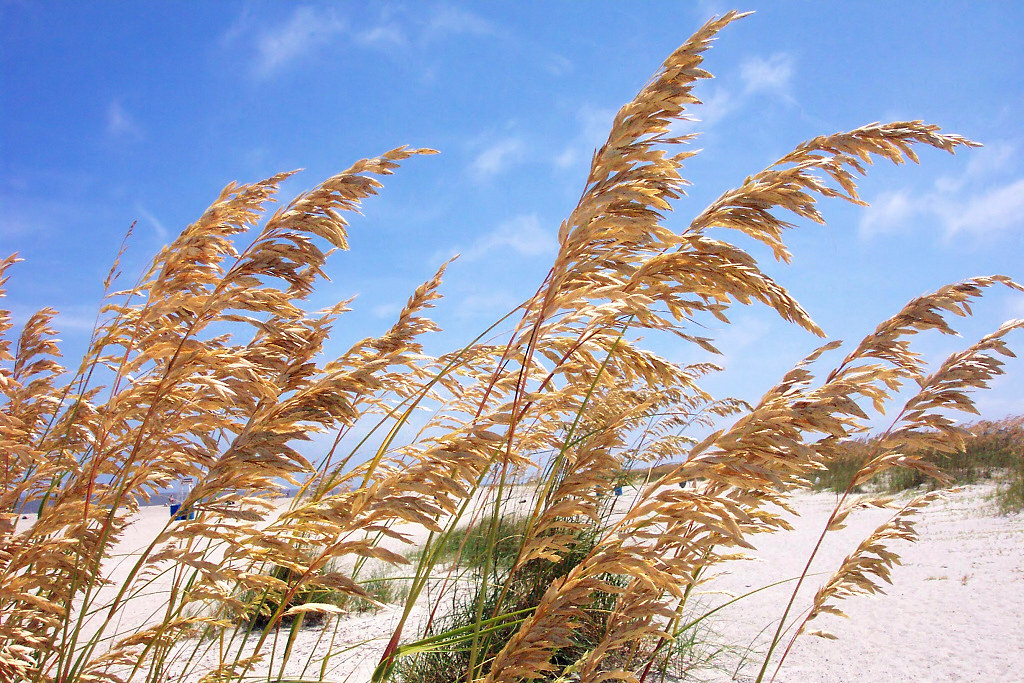
Little St. Simons was the scene of a visit in the spring of 1839 by the well-known English Shakespearean actress, Fanny Kemble, who accompanied her husband, Pierce Mease Butler, Major Butler’s grandson, on a visit to the family’s Altamaha plantations. “The atmosphere was thick with sand flies,” Kemble wrote in her journal on April 14, 1839, “which drove me in at last from standing listening to the roar of the Atlantic on Little St. Simons Island, the wooded belt that fends off the ocean surges from the north side of Great St. Simons. It is a wild little sand heap, covered with thick forest growth, and belongs to Mr. [Butler]. I have long had a great desire to visit it.” Several days later, Kemble visited the island and recorded her impressions: “Our navigation was a very intricate one, all through sea swamps and marshes, mud banks and sandbanks, with great white shells and bleaching bones stuck upon sticks to mark the channel. We landed on this forest in the sea by Quash’s house, the only human residence on the island. It was larger and better, and more substantial than the Negro huts in general, and he seemed proud and pleased to do the honors to us.”
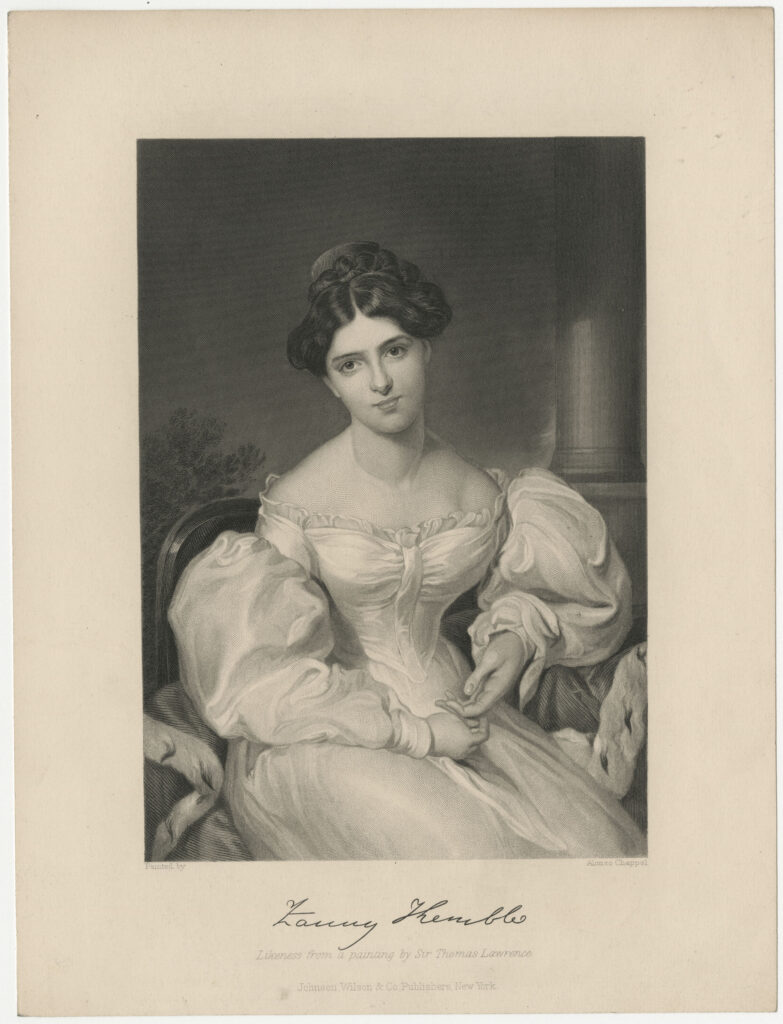
During her four-month stay in tidewater Georgia, Fanny Kemble Butler compiled the series of letters that made up her Journal of a Residence on a Georgian Plantation in 1838-1839, published in London in 1863. The Journal not only was a severe indictment against slavery but also provides one of the best firsthand accounts of plantation life on the Georgia coast during the middle antebellum period.
In early 1908 Little St. Simons passed from more than a century of Butler family ownership when it was sold by its absentee owner, Frances Butler Leigh, to O. F. Chichester of the Eagle Pencil Company for $12,500. Chichester was interested in the great number of red cedar trees on the island. Many of the cedars were cut in the following months, and the logs were sent to the nearby St. Simons sawmill to be sawed into small planks and used in the manufacture of pencils. Chichester built a small residence on the south end of Little St. Simons near the beach for use as a winter retreat. In late 1908 Chichester sold the island to Philip Berolzheimer of New York City.
The Berolzheimer family began taking advantage of Little St. Simons as a vacation destination and in 1917 built a hunting lodge in the interior of the island. This residence was used as a retreat by the family throughout the 1920s and 1930s, when a number of their northern guests came to the island to enjoy hunting and other recreational activities. During World War II (1941-45) the island served as a patrol station, where the U.S. Coast Guard could observe of German submarine activity off the coast. In the 1970s the Berolzheimer family converted their island residence into an expanded lodge to accommodate paid guests to Little St. Simons, an activity that still continues.


